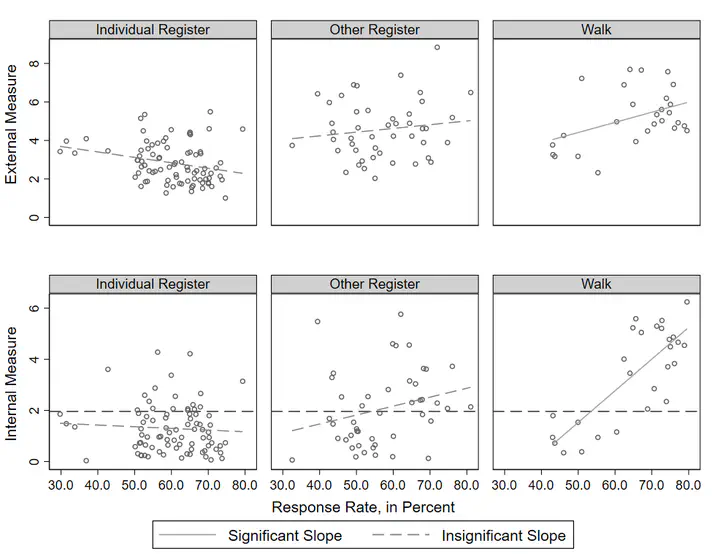Interviewer Invovlement in Sample Selection Shapes the Relationship between Response Rates and Data Quality

Abstract
Several studies have shown that high response rates are not associated with low bias in survey data. This paper shows that, for face-to-face surveys, the relationship between response rates and bias is moderated by the type of sampling method used. Using data from Rounds 1 through 7 of the European Social Survey, we develop two measures of selection bias, then build models to explore how sampling method, response rate, and their interaction affect selection bias. When interviewers are involved in selecting the sample of households or respondents for the survey, high reported response rates can in fact be a sign of poor data quality. We speculate that the positive association detected between response rates and selection bias is because of interviewers’ incentives to select households and respondents who are likely to complete the survey.
Click the video button above for an illustration of what we think is going on during the survey interview to drive the results we see in ths paper.